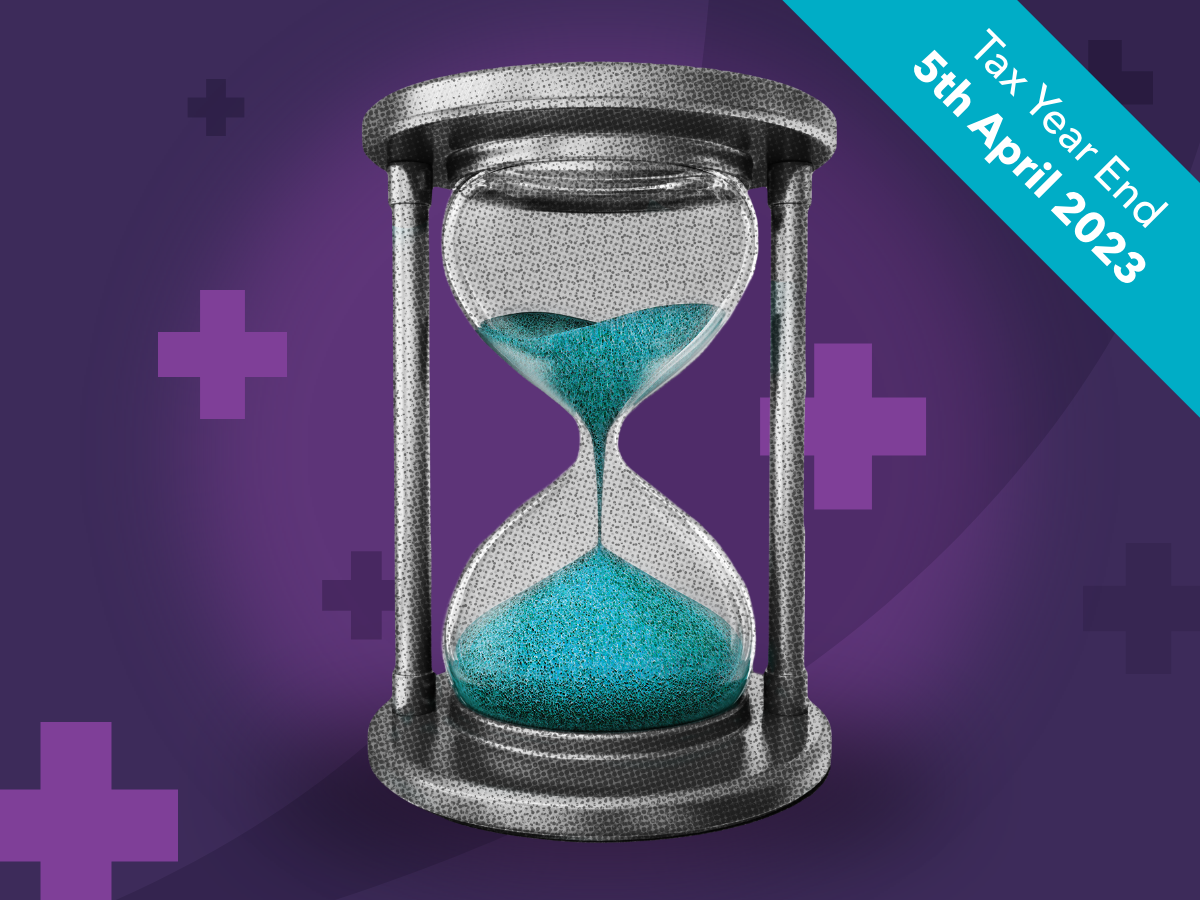
Time is almost up!
You have until midnight on 5th April to invest in the 2022/23 tax year. To avoid any last-minute stress – why not act today?
Use our checklist to ensure you are all set for tax year end. Try to think of this as a tax year reset rather than an ending. Any time is always a good time to stay on top of your money.
-
Your ISA allowance is ‘Use it or lose it’
Through the 2022/23 tax year you’ve had an ISA allowance of £20,000. This allowance applies across all the ISAs you’ve added to in the current tax year, such as a Cash ISA, Stocks & Shares ISA or other ISA types. For example, you could put £10,000 in a Cash ISA and another £10,000 in a Stocks & Shares ISA but you can’t exceed the £20,000 allowance in total. Also worth noting is that you can only pay into one of each type of ISA in a single tax year. In other words, the Stocks & Shares ISA you are paying into is your set Stocks & Shares ISA for the tax year
If you have any ISA allowance remaining, it could be a good idea to use all, or as much of this allowance as possible. You won’t pay Income or Capital Gains Tax on the interest or growth your ISA generates. At True Potential, our Stocks & Shares ISA is flexible. This means you can pay back in any money withdrawn from the ISA during the tax year, and this won’t count towards your allowance being used up.
You can’t carry over any of your ISA allowance, so it really is a case of use it or lose it with this opportunity.
Investing into an ISA is also a good way to potentially protect your cash from the corrosive effects of high inflation. If your investment goal is for the long term, a Stocks & Shares ISA could make sense, as the performance of the funds you are invested in could potentially grow at a rate above inflation over the long term. Of course, with investing your capital is at risk and you may get back less than you invest.
A Cash ISA may be useful for shorter-term goals or if you aren’t willing to take on any investment risk in pursuit of potential above-inflation returns.
However you decide to use your money, on April 6th your ISA allowance will reset and any allowance left unused this tax year will be gone forever.
-
Don’t miss out on tax savings in a Pension
In most cases, your Pension Annual Allowance for the 2022/23 tax year will be £40,000. You can contribute up to 100% of your earnings into your Pension or £40,000 – whichever is lower. You can pay as much as you like into your Pension, but the Pension Annual Allowance is the limit to what will be tax free.
You receive tax relief when making eligible contributions into a Pension, with 20% being automatically added and total relief of 40% and 45% available for higher and additional rate taxpayers.
For example, in the 2022/23 tax year, basic-rate taxpayers can invest up to £32,000 of their net earnings and get £8,000 on top from the government.
Your Pension Annual Allowance will renew once the tax year ends, and you’ll start the 2023/24 tax year with a new Pension Annual Allowance of 100% of your earnings or up to the new pension annual allowance of £60,000.
If you aren’t able to use your full allowance in the current tax year, unlike an ISA, you may be able to carry forward with a pension allowance.
Carry forward allows you to use up any unused allowance from the three previous tax years, as long as you held a registered UK Pension in those years. This means that the next week could be your last chance to claim tax relief on your pension contributions from 2019/20 – do not miss out.
-
Don’t overlook potential missing Pensions
While checking on your finances, now could be a good time for an overall financial health check. As part of that financial review, it may be a good time to look for any missing or forgotten Pensions you may have accumulated over your career. Using the government pension finder service, or getting in touch with our lost pensions team could be a good idea – particularly if you’ve changed jobs several times, you may have paid into workplace Pensions without realising.
There may be advantages to consolidating your Pensions into one investment. For example:
- It is easier to track performance against your long term goals, by being able to view your investment as one whole in an app such as the True Potential app.
- It may be more cost effective relating to provider charges. If you are paying multiple charges, this could add up over many years to a significant amount.
However, keep in mind that transferring and consolidating won’t be for everyone. It will be unique to your own financial circumstances, so speak with a financial adviser if you have any doubts. For example, certain Pensions will have valuable benefits such as guaranteed annuity rates, protected higher tax-free cash percentages and protected retirement ages that would be lost on transfer.
-
Name your Pension beneficiary
You could also use this time to check if your personal details and preferences are up to date, including your named beneficiaries. Naming a Pension beneficiary is an important part of your financial legacy, as money passed on through a Pension isn’t usually liable to inheritance tax.
Adding a beneficiary is straightforward, simply log in to your True Potential account and select your Pension. Under details and Expression of wish you’ll be able to name beneficiaries, for example your wife and children.
It is important to decide upon your beneficiaries, as this will ensure your assets are distributed as you wish. If you haven’t named beneficiaries, the government could dictate how your estate is divided and it may be less tax efficient to your wealth.
-
What about your children?
A Junior ISA in the 2022/23 tax year allows you to invest up to £9,000 for each of your children. This can be as a Cash ISA or a Stocks & Shares ISA, or you can hold both types. This is separate to your £20,000 personal ISA allowance. To be clear, the funds legally belong to the child and cannot be withdrawn until they’re 18 years of age.
You contribute specifically for the future of your child, and they’ll be able to take control of the account at 16, with their access to the money coming when they turn 18. This could be a useful way to build a pot for them towards education fees or their first home.
-
Get in touch with the experts
If you are in any doubt about your personal finances and tax year end, the simple thing to do is get in touch with your financial adviser.
Every single person will have unique circumstances and that’s why seeking financial advice is often the best course of action. A financial adviser will be able to help you assess your finances and goals, giving you the best course of action to take around tax year end.
With investing, your capital is at risk. Investments can fluctuate in value and you may get back less than you invest. You should ensure your contribution does not result in your total ISA contributions within the tax year exceeding £20,000. You should also ensure your contribution does not result in your total Pension contributions within the tax year exceeding £40,000. Tax rules can change at any time. ISA eligibility and tax rules apply. Pension eligibility and tax rules apply. This blog is not personal recommendation or financial advice.
If you need financial advice or would like to open an account yourself visit www.truepotential.co.uk or call our dedicated team on 0191 625 0350.
With investing, your capital is at risk. Investments can fluctuate in value and you may get back less than you invest. You should ensure your contribution does not result in your total ISA contributions within the tax year exceeding £20,000. You should also ensure your contribution does not result in your total Pension contributions within the tax year exceeding £40,000. Tax rules can change at any time. ISA eligibility and tax rules apply. Pension eligibility and tax rules apply. This blog is not personal recommendation or financial advice.
Back to blog







